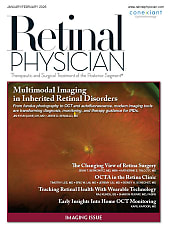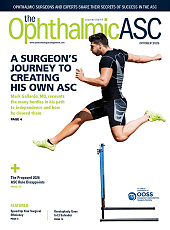A systematic review and meta-analysis has provided national prevalence estimates of diabetic retinopathy (DR) and its complications in American Indians/Alaska Natives (AI/AN) compared with nonindigenous Americans. The study, recently published in Ophthalmology, pooled data from 53 studies and included more than 10 million individuals with diabetes.
Among patients with diabetes, pooled prevalence estimates showed that any DR was present in 21% of AI/AN patients and 20% of non-AI/AN patients. Proliferative DR (PDR) was observed in 3% of AI/AN patients compared with 2% of non-AI/AN patients, while diabetic macular edema (DME) was present in 3% of both groups. Vision-threatening DR (VTDR)—which includes severe nonproliferative DR, PDR, or DME—was reported in 3% of AI/AN patients and 5% of non-AI/AN patients. Complications of PDR were rare, with vitreous hemorrhage reported in 0.03% of cases and retinal detachment in 0.09%; no studies reported cases of neovascular glaucoma. Pairwise analyses of the limited studies directly comparing AI/AN and non-AI/AN patients suggested no significant differences in DR prevalence, though the certainty of this evidence was rated very low.
Subgroup analyses revealed several associations. Longer diabetes duration was linked to higher DR prevalence among non-AI/AN patients, type 1 diabetes was associated with higher rates of DR and PDR, and administrative databases tended to report lower DR prevalence compared with clinical examination or fundus photography. Additionally, HbA1c of at least 8% was correlated with an increased prevalence of DME.
Compared with 2008 NHANES data, which reported a DR prevalence of 28.5% in U.S. adults aged 40 years and older with diabetes, the current pooled estimates of around 20% are lower. These differences may reflect variations in study populations, improvements in diabetes care, or methodological heterogeneity. Global prevalence estimates of DR (22.3%) and VTDR (6.2%) remain higher than the U.S. pooled estimates from this review.
The authors searched Ovid MEDLINE, EMBASE, and Web of Science through February 23, 2025, for studies evaluating DR prevalence in the United States. Eligible studies included population-based cohorts that used fundus photography or ophthalmic examination and enrolled adults (≥18 years) with type 1 or type 2 diabetes. Risk of bias was assessed using the Joanna Briggs Institute tool, and certainty of evidence was graded with GRADE methodology. Limitations included substantial heterogeneity among studies, potential underreporting in AI/AN groups due to barriers in access to screening and imaging quality, lack of age-standardized or diabetes type–specific prevalence in many studies, and a small number of direct comparisons between AI/AN and non-AI/AN populations.
To improve screening, diagnosis, and treatment in underserved populations where access remains a major barrier, the researchers recommended approaches such as teleophthalmology, artificial intelligence–based diagnostics, and port delivery systems. RP








